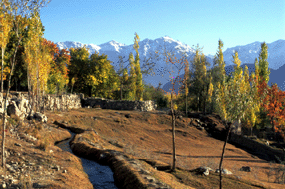Understandings of Watershed Management
One common definition of Watershed Management says that:
Watershed Management (WM) is an intergrated approach to the management of natural resources that aims to secure the living conditions of local communities in a sustainable manner (GTZ, citied in Förch and Schütt 2004).This is one approach of Watershed Management. It is practiced by regional developers in rural areas focussing on improving the quality of life for the local population; eg., GTZ. The regeneration of natural resources is viewed as secondary, as a means to an end (Förch and Schütt 2004 b).
Another approach to Watershed Management is that of natural resource managers who view water as a basic element of all life. Thus, their aim is to develop an integrated package of measures to pursue two water issues:
- First, to increase the availability of water for increased biomass production.
- Second, to reduce the destructive forces by water.
The improvement of living standards is therefore a consequence and not a priority of their measures (Förch and Schütt 2004 b). One advocate is Butler, for example.
A third approach to Watershed Management is also that of conservationists. This approach focuses on the management of natural resources (especially soil and water conservation) as its primary goal. However, livelihood concerns (i.e. poverty alleviation) are addressed in so far as that they help to further conservation objectives. Thus, socio-economic development is viewed as a means to this end (Bollom 1998; German et al. 2007). Michael Bollom is one advocate, for example.
This learning module is based on the first approach to Watershed Management.
But what is natural resources management? The next chapter will introduce you to natural resource management and planning before you learn the basics of the Watershed Management approach.
